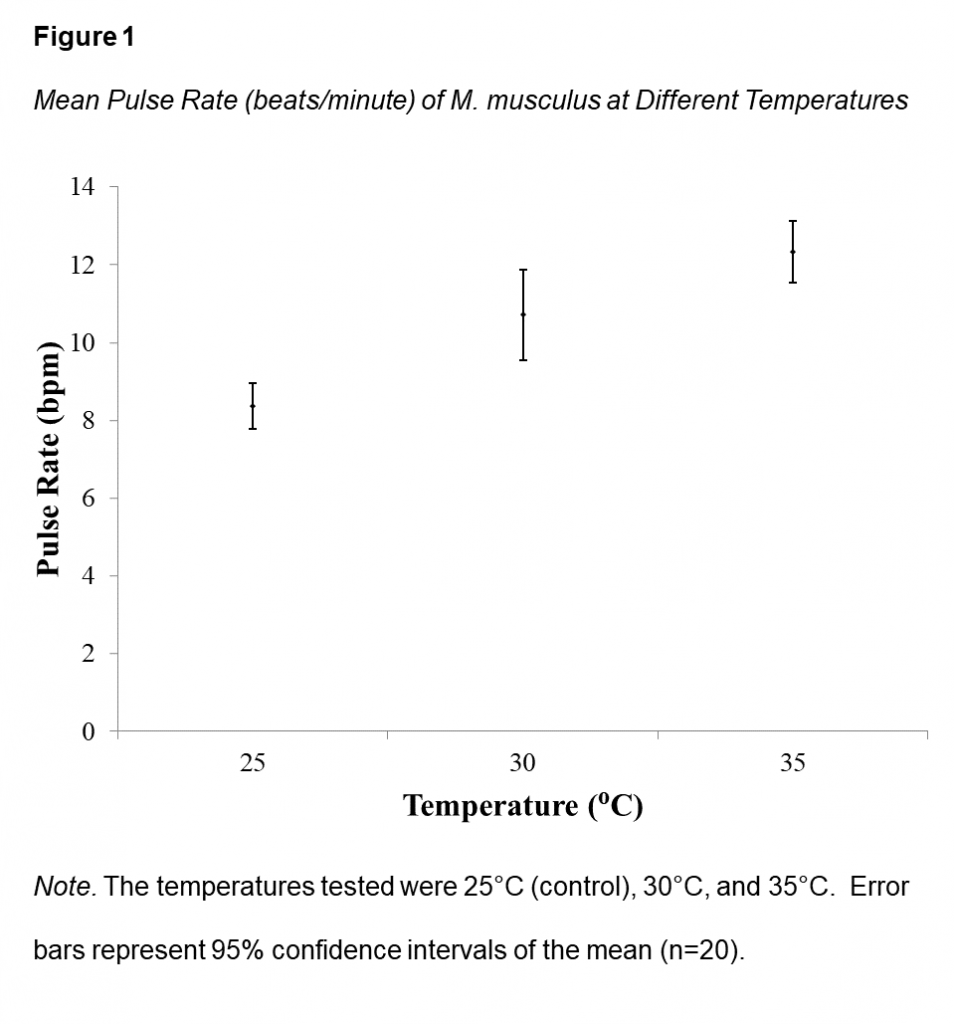7 Addressing the Null & Alternate Hypotheses
Forming Hypotheses
After coming up with an experimental question, scientists develop hypotheses and predictions.
The null hypothesis H0 states that there will be no effect of the treatment on the dependent variable, while the alternate hypothesis HA states the opposite, that there will be an effect.
Every hypothesis should include the following information:
- Name of organism (common and Latin name)
- Name of variable being manipulated (independent variable) with units
- Which response will be measured (dependent variable) with units
Example of Null and Alternate Hypotheses
Null hypothesis (H0): Temperature (oC) will have no effect on the pulse rate, measured in beats per minute, of mice (Mus musculus).
Alternate hypothesis (HA): Temperature (oC) will have an effect on the pulse rate, measured in beats per minute, of mice (Mus musculus).
Reject or Fail to Reject the Null Hypothesis
To determine if two groups are different from one another, we look to see whether or not their respective 95% confidence intervals overlap and then relate this conclusion back to our two hypotheses.
If the 95% confidence intervals of two sample means do overlap (e.g., a treatment and the control), we are less than 95% sure (i.e. not sure enough) that these two groups reflect a true difference in the populations. This results in a failure to reject the null hypothesis, as there is insufficient evidence to support our alternative hypothesis that there was an effect.
If the 95% confidence intervals do not overlap, we are 95% sure that these two groups reflect a true difference in the populations. This result allows us to reject our null hypothesis and provide support for our alternative hypothesis. It should be noted that calculating confidence intervals only allows us to compare two groups at one time.
Interpreting Confidence Intervals
For example, the 95% confidence intervals of the 30oC and 35oC degrees treatment groups do not overlap with the confidence intervals of the 25oC (control) (Figure 1). In this case, we reject the null hypothesis and provide support for the alternate hypothesis. We conclude that temperature (oC) will have an effect on the pulse rate, measured in beats per minute, of mice (Mus musculus).

NOTE
How to Address the Null and Alternate Hypotheses in the Discussion
In the Discussion section of your report you will need to discuss whether or not the 95% confidence intervals of the treatment groups overlap with the control.
When addressing the null and alternate hypothesis in the Discussion:
- State whether the confidence intervals overlap with the control (be specific about which treatment(s) overlap).
- If you reject or fail to reject the null hypothesis (use this language).
- A full restatement of the supported hypothesis.
Click on the hotspots below to learn about how to address the null and alternate hypotheses in the Discussion.
How to Address the Null & Alternate Hypotheses in the Discussion
